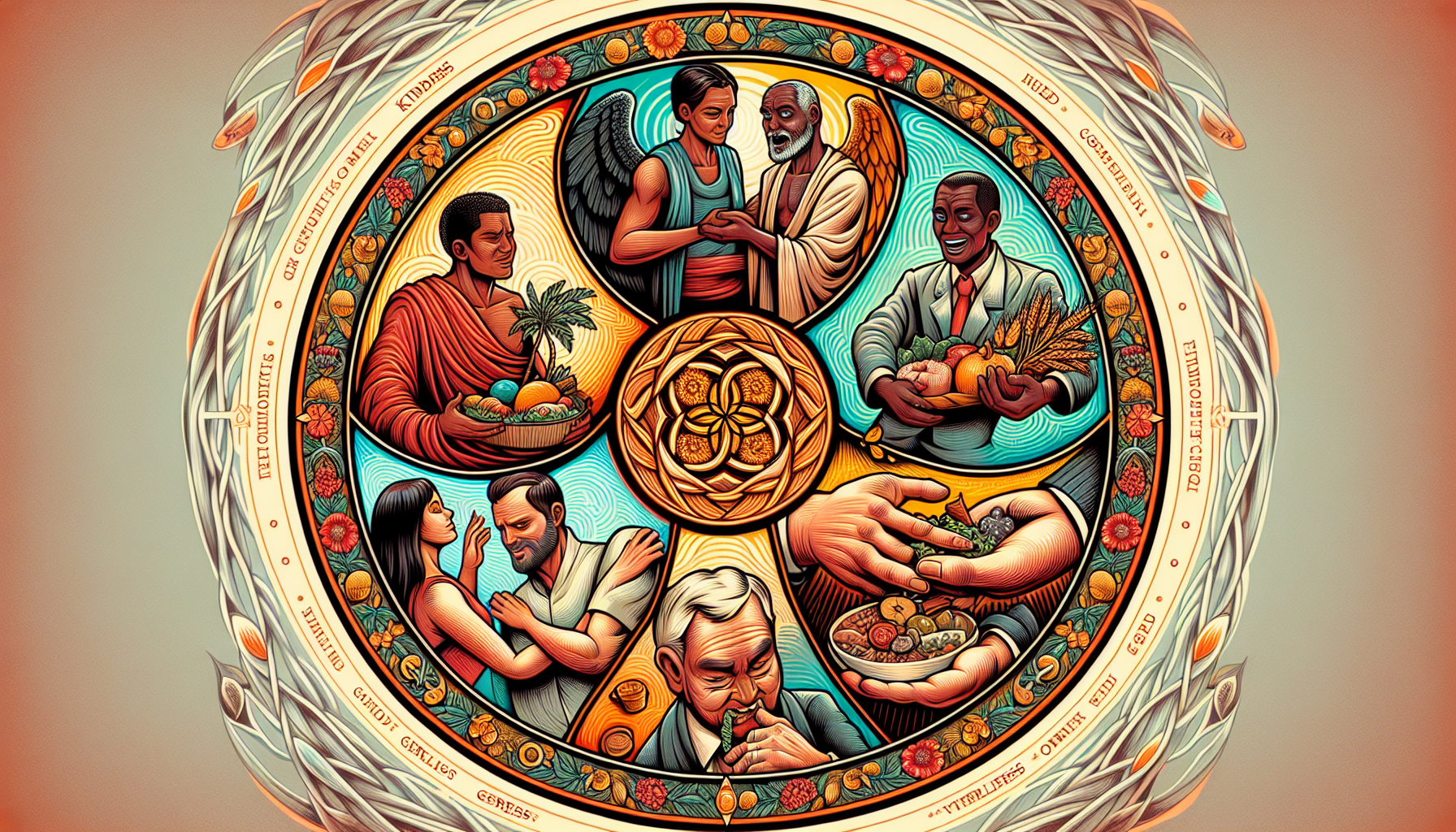Silk Road Treasures: Trade and Wealth in Ancient China

Silk was perhaps the most coveted product to emerge from ancient China, a fabric so exquisite that it was often referred to as "the fabric of the gods." The production of silk began during the Shang Dynasty (1600-1046 BCE) and became a tightly guarded secret that contributed significantly to China's wealth. The Chinese established a near-monopoly on silk production, allowing them to dictate trade terms and prices. During the Han Dynasty (206 BCE–220 CE), silk trade flourished as the Han emperors encouraged the expansion of trade routes. The demand for silk in places like Rome was insatiable; Roman elites would pay gold for silk garments. This demand not only enriched Chinese merchants but also funded the Han government, enabling it to maintain vast armies and undertake significant infrastructure projects. For instance, the construction of roads and canals was crucial for trade, facilitating the movement of goods and ensuring that silk reached distant markets.
The Tea Trade
Alongside silk, tea emerged as another transformative commodity. Although tea cultivation began as early as the Shang Dynasty, it gained popularity during the Tang Dynasty (618-907 CE). The introduction of tea to foreign markets, particularly to Central Asia and later to Europe, created a new trade dynamic. Tea houses became cultural hubs in cities along the Silk Road, fostering social interaction and the exchange of ideas. Merchants and travelers would gather to enjoy tea, discuss trade, and share stories, contributing to a cosmopolitan atmosphere. The process of trading tea was intricate, involving various intermediaries, each adding their mark-up to the price. This not only facilitated economic growth in China but also established tea as a social staple in many cultures around the world, forever altering consumption patterns and social customs.
Porcelain: The White Gold
Porcelain, often referred to as "white gold," was another treasure that defined China's economy and art. The production of fine porcelain began in the Tang Dynasty but reached its zenith during the Song Dynasty (960-1279 CE). Renowned for its beauty and durability, porcelain was highly sought after by merchants along the Silk Road. The trade of porcelain generated immense wealth for Chinese artisans and significantly influenced artistic traditions globally. European countries, enamored by the beauty of Chinese porcelain, began to develop their own porcelain production techniques, leading to centuries of artistic innovation. The popularity of porcelain also inspired the creation of elaborate trade networks, as merchants sought to transport this coveted item across vast distances.
Cultural Exchanges and Economic Impact
The trade of these commodities was not merely an exchange of goods; it was a catalyst for cultural interactions. As merchants traveled the Silk Road, they brought with them not only products but also ideas, religions, and technologies. Buddhism, for example, spread into China from India via these trade routes, leading to profound cultural transformations. The influence of Buddhism can still be seen today in various aspects of Chinese culture and philosophy. The economic impact of the Silk Road was significant. The wealth generated from the trade of silk, tea, and porcelain allowed for advancements in various sectors, including agriculture, infrastructure, and the arts. The establishment of market towns and trade hubs created opportunities for local economies to flourish, while the influx of foreign products and ideas enriched Chinese culture and society. For instance, the cultivation of new crops and the introduction of advanced agricultural techniques improved food security and contributed to population growth.
The Silk Road was more than just a series of trade routes; it was a dynamic exchange of goods and cultures that shaped ancient China and the world. The treasures of silk, tea, and porcelain were not only instrumental in fostering economic prosperity but also played a crucial role in cultural exchanges that would have lasting impacts. Understanding the significance of these commodities provides a glimpse into how trade can influence societies, laying the groundwork for global interactions that continue to this day. As we reflect on the historical significance of the Silk Road, we recognize its role in connecting civilizations and cultivating an appreciation for the intricate tapestry of human history. The legacies of these ancient trade practices remind us that the past is not merely a collection of events but a living narrative that continues to inspire and inform our modern world.
Trade Analyst
Government trade agencies, multinational corporations, and economic research firms
Core Responsibilities
Analyze trade data and market trends to provide insights into the economic impact of commodities such as silk, tea, and porcelain.
Collaborate with international trade teams to assess trade policies and regulations affecting global markets.
Prepare detailed reports and presentations for stakeholders, highlighting opportunities and risks in trade.
Required Skills
Proficiency in data analysis tools (e.g., Excel, Tableau) and statistical software.
Strong understanding of international trade regulations and economic principles.
Excellent communication skills for presenting complex data clearly.
Cultural Heritage Consultant
Museums, cultural organizations, and non-profit heritage preservation societies
Core Responsibilities
Advise organizations on the preservation and promotion of cultural heritage related to historical trade routes, such as the Silk Road.
Develop educational programs and resources to enhance public understanding of cultural exchanges and their significance.
Collaborate with museums and cultural institutions to curate exhibits that showcase historical artifacts.
Required Skills
Background in anthropology, history, or cultural studies, with a focus on trade history.
Strong project management skills and experience in community outreach.
Ability to engage with diverse audiences and stakeholders.
International Business Development Manager
Export companies, international trade organizations, and multinational corporations
Core Responsibilities
Identify and pursue new business opportunities in international markets, focusing on commodities like silk and tea.
Develop strategic partnerships with foreign distributors and suppliers to enhance market reach.
Conduct market research to understand consumer preferences and competitive landscapes.
Required Skills
Strong negotiation and sales skills, with a proven track record in international markets.
Familiarity with import/export regulations and international trade laws.
Multilingual abilities are a plus, particularly in languages relevant to target markets.
Supply Chain Manager (Specializing in Luxury Goods)
High-end retailers, luxury brands, and specialty import/export companies
Core Responsibilities
Oversee the supply chain operations for luxury goods such as silk and porcelain, ensuring quality and timely delivery.
Develop relationships with suppliers and logistics partners to optimize the supply chain process.
Implement strategies for cost reduction while maintaining high product standards.
Required Skills
Experience in supply chain management, particularly in luxury or specialty goods.
Strong analytical skills to assess supply chain performance metrics.
Knowledge of sustainable sourcing practices and ethical trade.
Economic Historian
Universities, research institutions, and historical societies
Core Responsibilities
Research and analyze the economic impact of historical trade routes, particularly the Silk Road, on ancient civilizations.
Publish findings in academic journals and present at conferences to advance understanding of trade's role in cultural exchanges.
Consult with educational institutions to develop curricula that incorporate economic history.
Required Skills
Advanced degree in history, economics, or a related field with a focus on trade history.
Strong research skills and proficiency in historical data analysis.
Excellent writing and presentation skills to convey complex information effectively.


